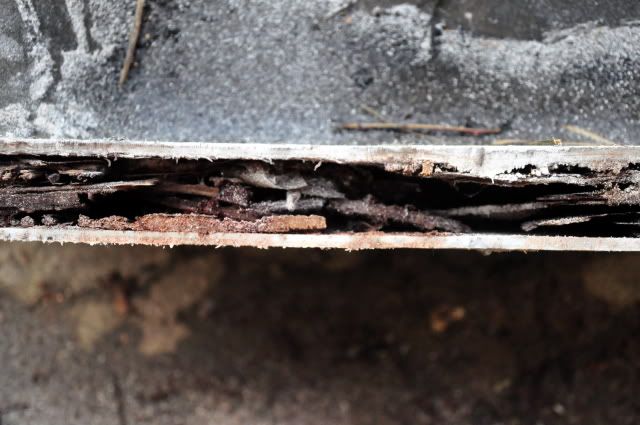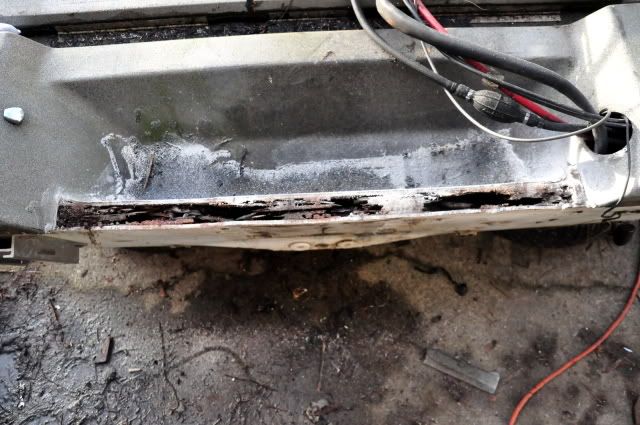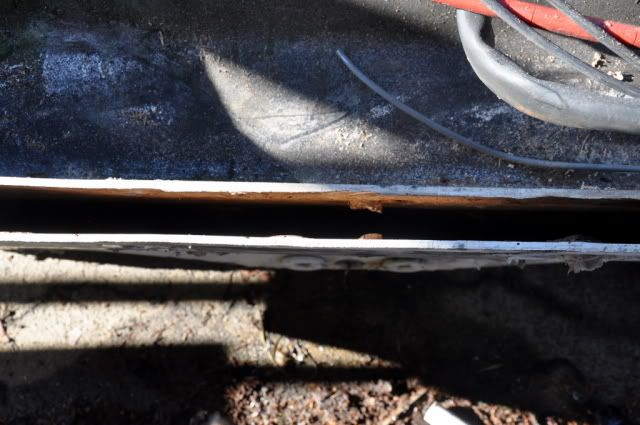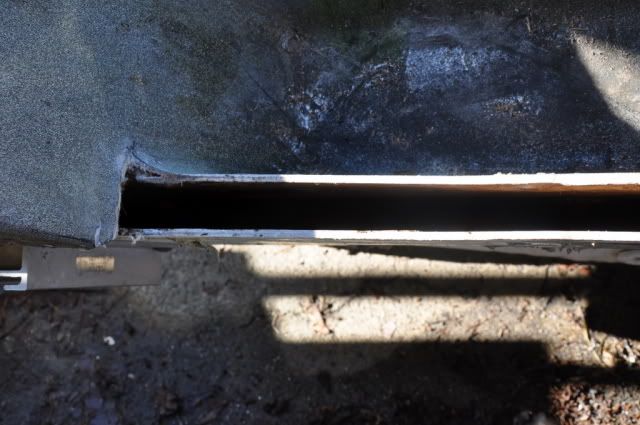Re: Transom Materials?
I agree that wood is a good option for a lot of boats, and epoxies and resins and all the cool stuff we have today allows for maximum encapsulation. In ideal conditions it lasts a long time. Just usually not as long as the rest of the boat. And since it's a fairly important structural component, I find that irksome.
What it gets sealed under is hard and brittle and subject to cracks if the wood gets moisture or humidity and swells, if you happen to hit a pot hole towing it to the lake, whack a stump or any of a broad array of traumatic incidents. The encapsulation can be compromised and moisture can enter . The edge grains are particularly hard to keep sealed. And in wood you've got a mix of porous, softer spring woods, mixed in with the denser summer wood. It's not really structurally consistent. The bugs who eat it tend to agree, as they will often nibble out the spring wood, and pass on the denser, harder to work with summer wood. So do the decay organisms, which gives us what's commonly called jumping ring rot....alternating layers of decay. Not much you can do about the composition of wood you can't get to on the inside. Usually it's what you can't see or get at that causes the problems.
And it's a geographical consideration. Climate here is sub tropical and a long growing season for what eats wood. Boat-filling 12 inch rains are not uncommon at all. There are periods of intense heat and humidity, some years it doesn't freeze. A Phoenix boat, Duluth boat, and a Tampa boat all have different maintenance requirements. I'm thinking if my boat is in Arizona,
there's not much worry about decay. In Tampa....well, those of us who made a living maintaining homes there know there's money to be made from wood exposed to the elements.

Cinder block and stucco is very popular. I'm closer to Tampa conditions than Arizona conditions.
And as you say, the goals for owning the boat and intended use could be a consideration. I tend to hang onto things, and use them hard and like rugged, low-maintenance stuff I don't have to worry about. My experience with wood as a (wood) inspector for a decade, cabinet maker and contractor for two decades tells me it's probably less than ideal for my locale and intended use. Your mileage may vary.

I inherited a freshly constructed, slathered with epoxy, built up plywood
transom ready to install from the previous owner...I'm sure he spent hours putting it together. There are approximately 16 feet of edge around it I will still have to provide a bullet proof sealing solution for. To me it's not worth the effort when I can install a no-worry permanent solution for the same amount of effort. And if I decide to sell it and a prospective buyer inquires about the transom......"Take a look bub...no mysteries with that deal. What you see is what you get." He may be one who has some experience with old boats and biodegradable wood transoms and appreciate not having to wonder what he might be up against when he bolts on that bigger engine.
Or I for that matter, ten years down the road.
Someone mentioned in another thread on the subject that if you're going to get a no-wood boat, you're going to have to pay for the privelege... Hmmmmmmm.
The wood transom I'm replacing right now is exactly 46 years old, it came out in one piece. Its wet, and pretty rotted around the lower edge, but was still supporting the motor and the transom did no crack. The wood is not treated, and is nothing more than two sheets of 3/4" plywood which was glassed in when the boat was molded. I plan to remake a new wood panel, coating each sheet with epoxy, and laminating both together with a layer of glass cloth in between. I also will predrill oversize holes where needed and epoxy in those areas as well. The original wood had no such coating or thought taken as to longevity but yet it lasted 46 years and was still doing its job well enough to not break. The wood I put in it will be protected a hundred times better, be far stronger with the added epoxy and glass layer, and will not have all the air gaps around the edges that the original panel had.
By the time that the wood I put in is even a concern, I'll be too old to care. If it lasts another 40 years, I doubt I'll still be running this boat. It would surprise me if I still own it in 5 years from now.
To do this in Nida Bond, I'm looking at two buckets, at $320 my cost with shipping, plus the added work of blocking off the bilge, building a temporary front panel and spacers to hold in the poured resin and filler, and then I still have to glass in the forward panel when I'm done.
This boat has a sealed lower bilge area, the deck is fiberglass, as are the stringers, so it's still in place. The inner skin of the transom was no more than a rag once the wood was removed. Since I'm doing this with wood again, I just cut around the edges and peeled it off, I'll most likely just glass the same panel right back in place with some strips around the edges for added strength. There's no side structure, just a single wall outer hull and the transom wood stops 3" short of reaching the top cap or gunwales in this boat.
It would be nice to think that if I were able to just pull out the old wood and dump in some resin with the drain tubes in place and be all done but the real fact is that I'd be looking at a few days of building a frame and support for the inner transom, dealing with a way to hold the drain tubes in place to just get ready for the pour, then I also have some concerns about the heat produced when curing and how thin this hull actually is. When I did the Seacast, the stuff got so hot it smoked or steamed for 45 minutes when it began to cure. But on that boat the transom panels were 3/16" fiberglass, the MFG's outer hull is single layer glass less than 1/8" thick with basically no inner support. The splashwell is held in with self tapping screws and a rubber bead along the edge.
If I could drive over and pickup the Nida Core locally, and save the shipping, it might help make me consider it for often on more boats, but on this, its just easier to use wood. I do have a few boats were a poured transom would be the ticket, mostly on any boat where access to the transom wood means cutting or damaging the original structure.
For me, the shipping on the stuff is about $60 per two buckets, add a third and the shipping jumps to $90.



























